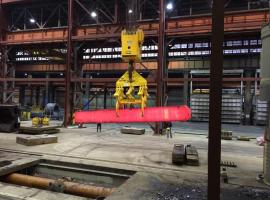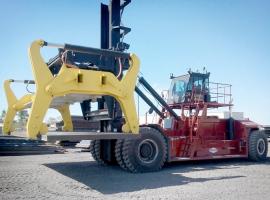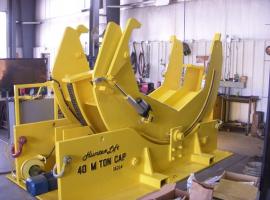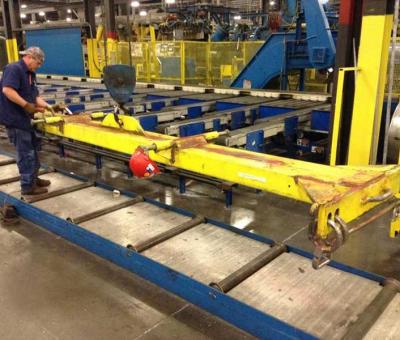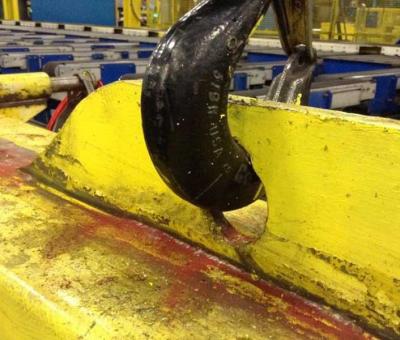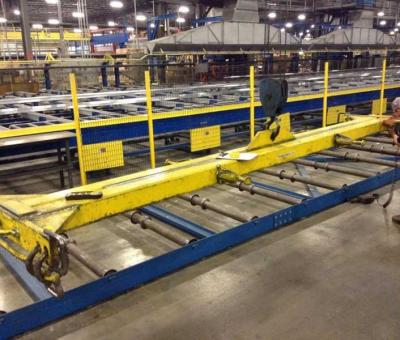Several years ago we were contacted by a metals manufacturer and asked to provide inspection services for 800 lifting devices in use at their facilities in Pennsylvania and Ohio. The customer required detailed inspections and documentation per ASME B30-20, Below the Hook Lifting Devices Safety Standard, and BTH-1, Design of below the Hook Lifting Devices. Unfortunately, the inspections were prompted by a number of failures within the facilities.
Due to the large number of lifting devices, Hunter Lift created a custom database to track each individual lifting device. The lifting devices were classified as "Severe", "Heavy" or "Normal" duty cycles based on the operating conditions of the lifter. If a lifter was not rated, it had to be reverse engineered and assigned a load rating, design category, and service classification. Each lifter had to undergo non-destructive testing on welds and various components, along with operational and visual tests. These field inspections are completed by an engineer from Hunter Lift and a third party level II or level III NDT technician. The overall initial inspections and evaluations of 800 devices took approximately 9 months to complete. Hunter Lift provided the customer with recommendations for each lifter based on the inspection findings. The field inspection services included a final report that was generated from the data and sent to the customer for review.
